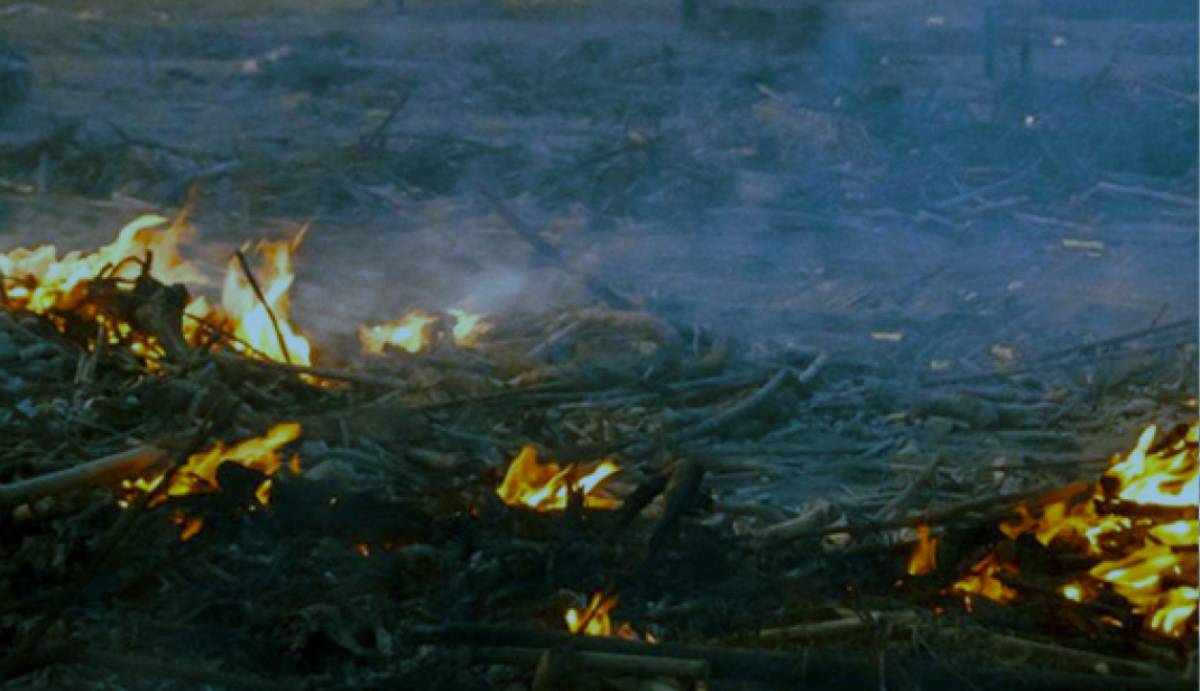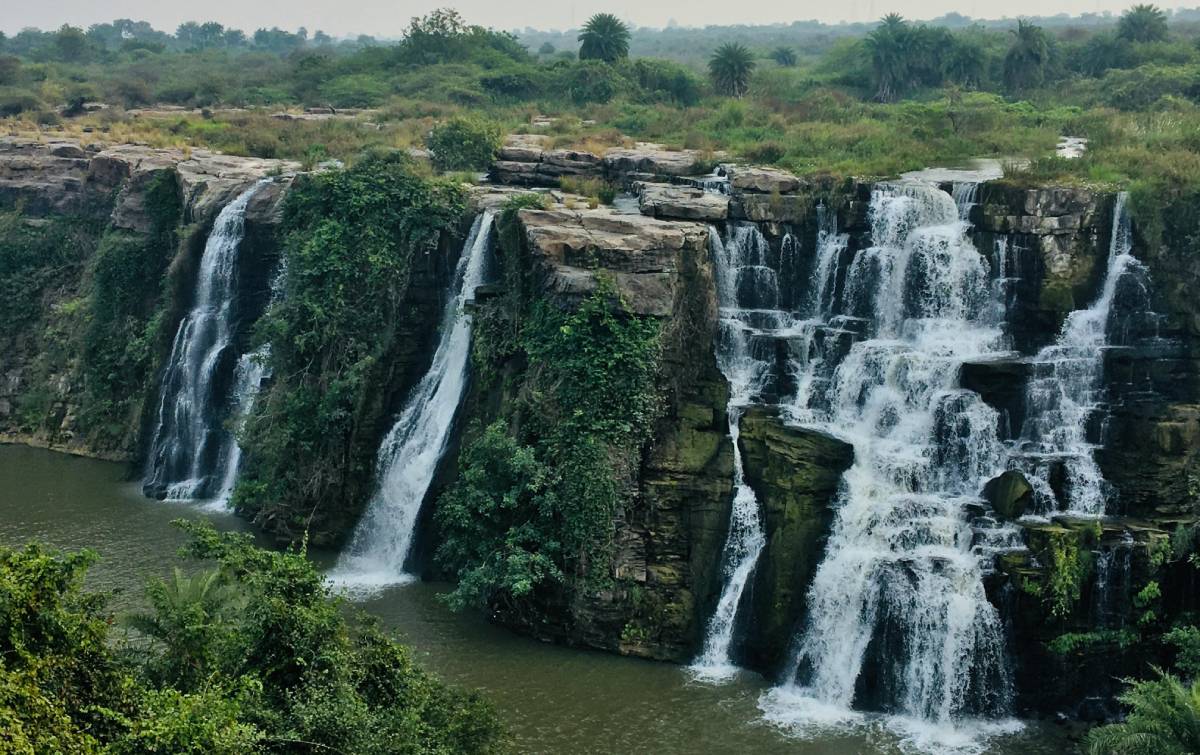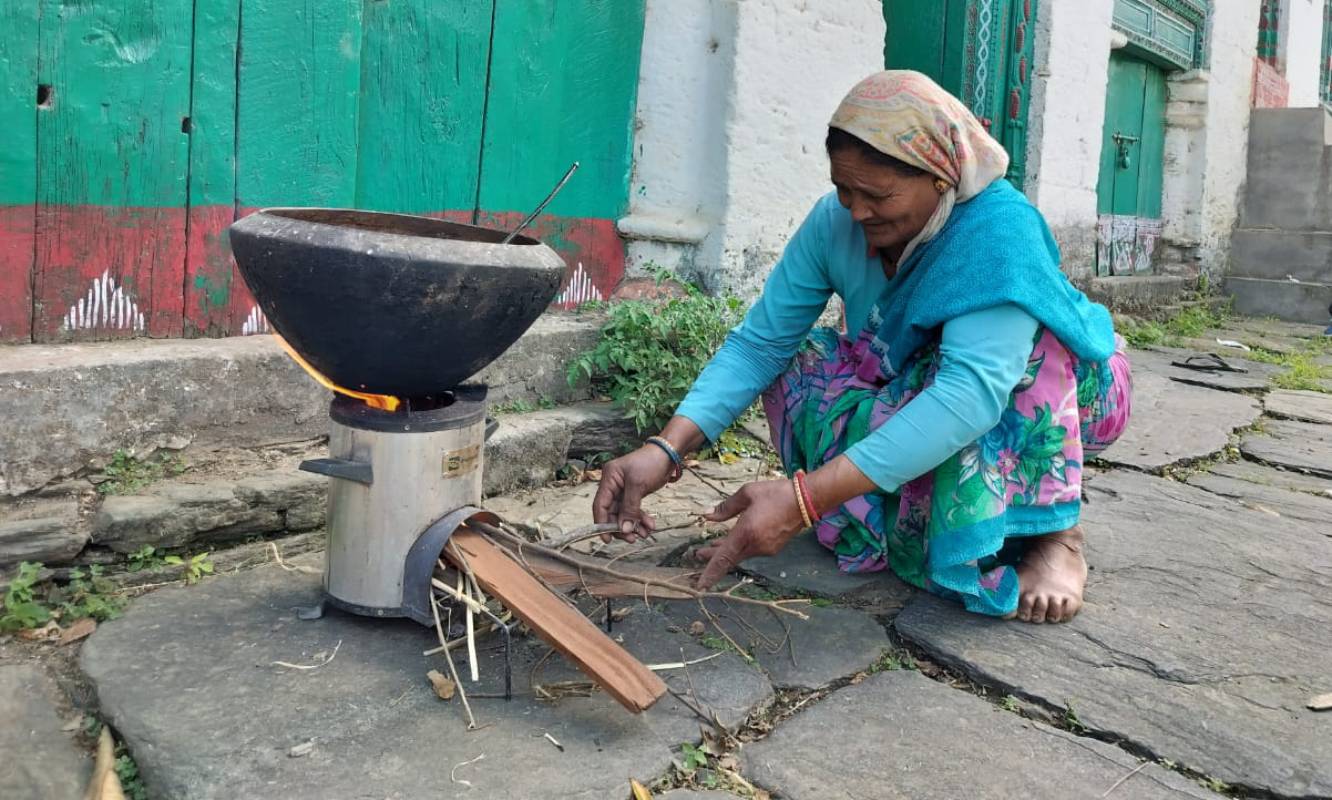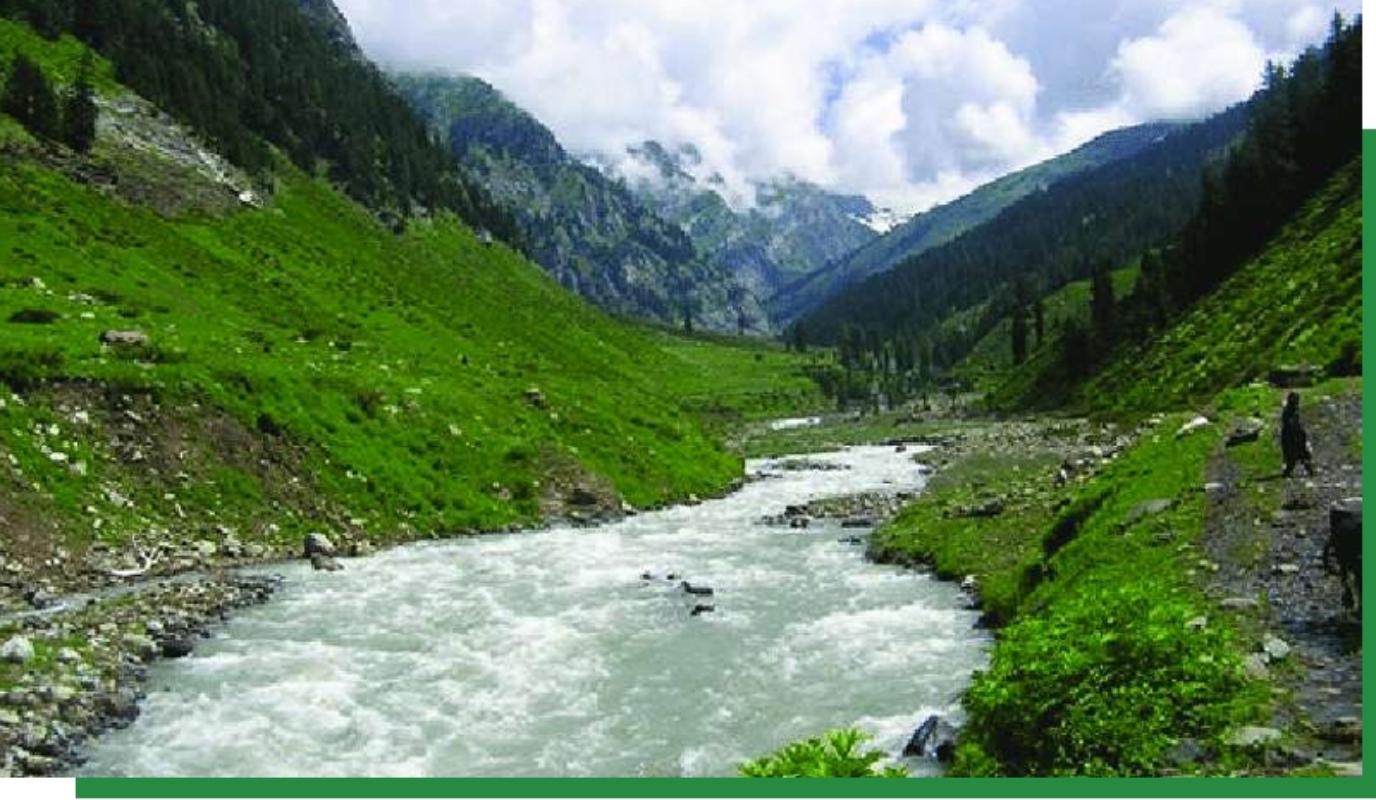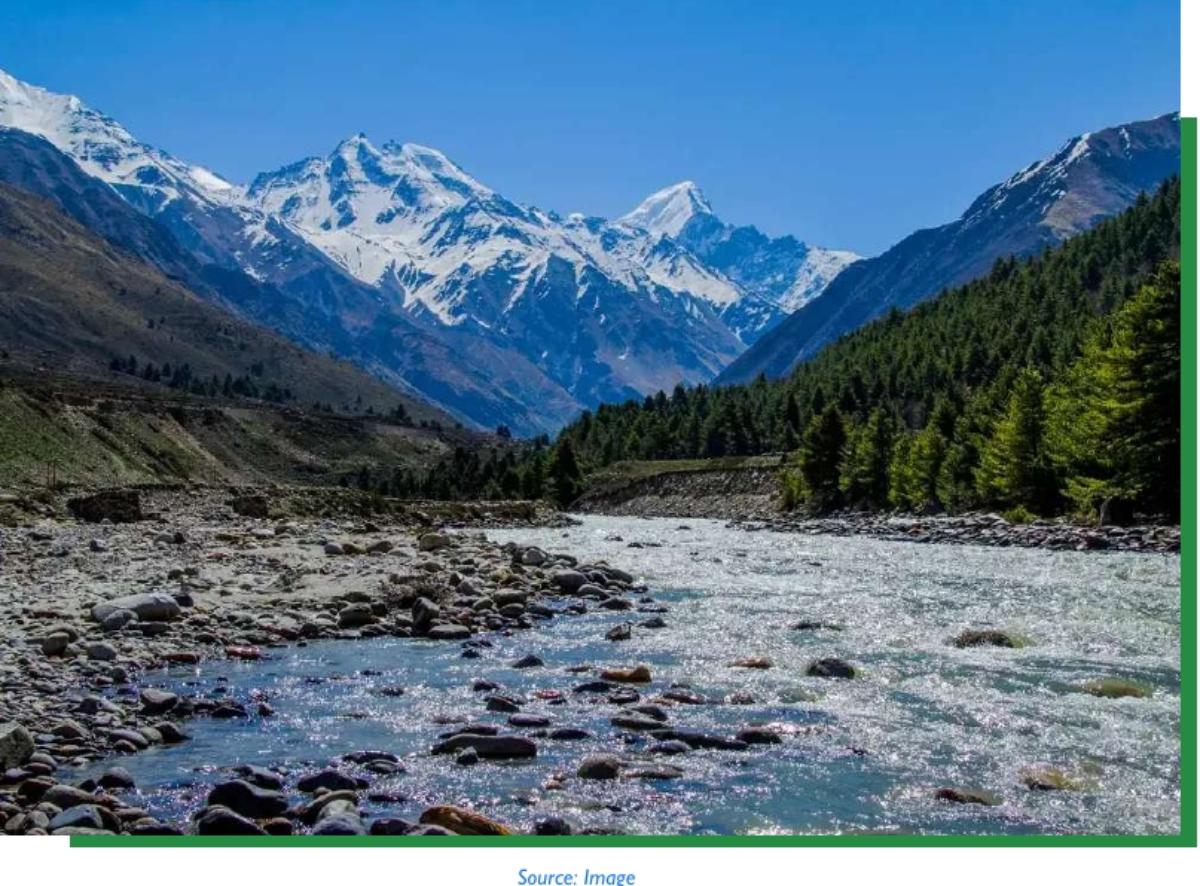The degradation of natural resources is strongly interconnected with the human migration. In fact, the over exploitation of natural resources especially in the rural areas leads to the distress migration in search of livelihood opportunities. This interconnectedness is not a new revelation, it has been well studied both from economic and ecological perspectives. The UNCCD in one of its working papers published in 2017 asserts that the degradation of natural resources especially land is a major push factor in the rural-urban migration. The study also notes that this linkage is further mediated by social, economic, demographic, political and environmental factors1 .The Berlin Institute in one of its recent paper validate this linkage. It found that the degradation of the nature and environmental hazards are root causes of the migration everywhere2 . Degradation of natural resources due to poor planning, mismanagement and increasing pollution all across the globe have compromised ecosystem services leading to distress migration.
In India, a large population has migrated in last 3-4 decades. As per the Census 2011, the total number of migrant population increased from 31.5 crore in 2001 to 45.6 crore in 2011. A substantial number in this population moved from distress rural areas to cities in the search of jobs. Various studies in India in the past attributed the continuous migration to the degradation of natural resources especially land, water and forest. A relatively new study of CPRs in Assam published in 2012 (Mahanta and Das, 2012) examined demographic, social, economic and environmental data of the state for the year 1991 and 2001 and found that the “decreasing common property resources distress out rural people to urban areas in search of livelihood.” Many of these natural resources were initially in the control of village communities governed through traditional systems. These are called the ‘Common Property Resources’ (CPR).
A series of studies conducted in different agro-climatic zones of India by N.S. Jodha in 1980s found that CPR plays significant role in the lives and livelihood of rural people. A study of few district in the dry region of the country including Gujarat, Karnataka, Rajasthan and Tamil Nadu revealed that poor people were more dependent on CPR as compared to the relatively rich villagers3 . He also pointed continuous decline of the CPRs both in terms of their size and productivity directly affecting rural economy.
The nationwide lockdown announced in the Month of March 2020 to contain the spread of SARS Cov-2 (COVID-19) revealed the vulnerability of migrant workers despite several claims at the policy level. The absence of protection net for migrant workers in cities forced them to travel back to their villages. India witnessed a large scale but painful reverse migration of workers in the month of April, May and June 2020. All these workers preferred to go back to their villages, despite knowing that, they don’t have much to earn back in their villages. Once again, the migration is a burning issue. Providing jobs to existing workers as well as returning migrants in their village is the current challenge.
Common Property Resources
The CPR in India includes resources like “pastures and grazing grounds, village forests and woodlots, protected and un-classed government forests, waste lands, common threshing grounds, watershed drainage, ponds and tanks, rivers, rivulets, water reservoirs, canals and irrigation channels (NSS, 1999). The idea of common property resources is not a new in India. It has been there for generation, and therefore, we had rich traditions around management, planning, governance and distribution of benefits of CPR. Nature of these traditions vary from region to region. However, over the time, the erosion in these traditions due to several factors led to degradation of village natural resources.
| The NSSO survey in 1998 classified CPRs in following two categories based on their ownership:
1- De Jure: the de jure CPRs are those resources which are within the boundary of the village and are formally (i.e. by legal sanction or official assignment) held by the village panchayat or a community of the village. 2- De facto: the de facto CPRs are those resources within the reach of villagers for which the local community do not entertain any formal right but they are in the use of the community by convention. These resources includes revenue land not assigned to panchayat or a community of the village, forest land, or even private land in use of the community by convention. |
Despite a rich traditional base, we don’t have any updated record on the status of CPR in India. The National Sample Survey Organization conducted one household survey in 1998 to estimate number of CPRs and people’s dependence on them in India. The survey estimated that in 1998, around 15% of the country’s landmass was common property formally held by the village panchayats or communities. The estimate and distribution of de jure CPR in 1998 is given in the following table.
Availability of Common Property Land Resources in Rural India
| Percentage of common property and resources in total geographical area | 15% |
| Common property land resources per household (ha) | 0.31 |
| Average household size | 5.04 |
| Common property land resources per capita (ha) | 0.06 |
| Components of common property land resources: (Percentage) | % |
| (i) Community pastures and grazing grounds | 23 |
| (ii) Village forests and woodlots | 16 |
| (iii) Other | 61 |
Source: NSSO, 1999
The NSSO survey further showed that despite not having formal entitlements, villagers do have traditions of managing and planning of large number of natural resources. This is called de facto ownership of CPRs. Combining these two ownership patterns, the total geographical area of the CPR is much more than 15% of the total geographical area of India. A study of few villages in the dry regions of the country, N.S. Jodha found that the spread of the CPR to the total geographical area was as high as 41% in Madhya Pradesh and 36% in Rajasthan4 . A latest study by the Foundation for Ecological Security (FES) in 2010 also used de facto approach and found that the average area of CPR to the total geographical area is 57% in Odisha, 43.6% in Madhya Pradesh, 32-43% in Gujarat, 42% in Andhra Pradesh, 34% in Karnataka and 24% in Maharashtra (FES, 2010).
The story of commons (CPRs) is more of less same all across the globe. All traditional communities are facing challenges related to the degradation of their CPRs. The Nobel Laureate Elinor Ostrom studied CPRs in different parts of the world to understand issues related to the sustainability of these resources. She developed an eight point framework for the sustainable and equitable governance of the CPRs. Eight principles of managing commons drafted by Elinor Ostrom are as follows5 :
- Define clear group boundaries.
- Match rules governing use of common goods to local needs and conditions.
- Ensure that those affected by the rules can participate in modifying the rules.
- Make sure the rule-making rights of community members are respected by outside authorities.
- Develop a system, carried out by community members, for monitoring members’ behavior.
- Use graduated sanctions for rule violators.
- Provide accessible, low-cost means for dispute resolution.
- Build responsibility for governing the common resource in nested tiers from the lowest level up to the entire interconnected system.
Common Property Resources and Livelihood:
People in rural area are highly dependent on common property resources for their life and livelihoods. The health of CPR is directly correlated with the local economic, social and cultural gains. It is this interconnectedness, which has probably developed traditional institutions of governance and customary laws to regulate these resources in various parts of the country. N.S. Jodha, in 1980s argued that the decline in the productivity of CPRs directly influence the economy of the rural poor6 . The study categorized dependence of people on CPRs in three broad categories as follows:
| Category of Benefits from CPRs | CPR benefits |
| Physical Products | • Food, fibres
• Fodder, fuel, timber, etc. • Water • Manure, silt, space |
| Income and Employment Benefits | • Off-season activities
• Drought period sustenance • Additional crop activities • Additional animals • Petty trading and handicrafts |
| Social and Ecological Benefits | • Resource conservation
• Drainage and recharge of groundwater • Sustainability of farming systems • Renewable resource supply • Better microclimate and environment |
http://www.fao.org/3/v3960e/v3960e05.htm#TopOfPage
The studies by N.S. Jodha in 1980s reveal that while rural poor were more dependent on CPRs for access of physical products and direct employment; the rural elites were benefited hugely by social and ecological benefits of CPRs. The study further concluded that in the arid and sub-arid regions of the country 70 to 80% villagers were heavily dependent on CPRs. The estimate by NSSO in 1998 revealed that as many as 48% rural households were dependent on CPRs for their livelihoods.
| Use of Common Property Resources Households reporting collection of any material from CPRs | 48% |
| Average value of annual collection per households | Rs. 693 |
| Ratio of average value of collection to average value of consumption expenditure | 3.02% |
| Households reporting grazing of livestock on CPRs | 20% |
| Households reporting use of common water resources for | |
| (i) Irrigation | 23% |
| (ii) Livestock rearing | 30% |
| (iii) Households enterprise | 2.8% |
Source: NSSO, 1999
The NSSO survey further found that 45% of rural households were dependent on CPRs for their fuel wood, 13% household for fodder collection and 20% household for grazing. There is no other estimation of CPRs after the NSSO survey in 1998. However, various studies and related data show that the productivity of CPRs has gone down drastically in last two decades. Nearly 10 years after NSSO survey the Foundation for Ecological Security (FES) conducted a small scale sample survey in few central and southern states to understand the updated status of CPRs and people’s dependence. This survey also found heavy dependence on CPRs despite their degradation. The dependence is higher in sub-humid and arid agro-climatic zones (FES, 2010).
Decline and Degradation of CPRs
Almost all major studies found that the CPRs are declining both in terms of quantity and quality. N.S. Jodha found that the percentage of common land to the total geographical area decreased from 41% in early 1950s to 24% in 1980s. Similar trend were observed in states like Rajasthan, Tamil Nadu, Gujarat and Andhra Pradesh. It also observed drastic decline in number of tree species and quantity of forest produces in these states. The declining trend was also observed in the NSSO survey conducted in 1998. According to this survey, the size of de jure CPR decreased at the quinquennial rate of 1.9%. This decline was observed faster in Middle-Gangetic Plains (7.2%), Trans-Gangetic Plains (7.1%) and Easter Plateau and Hills (5.0%).
The qualitative and quantitative degradation of CPRs can also be inferred from other studies related to land use change and land degradation in India. According to the State of the Forest Report, the forest cover of country remain stabilized at around 67 million hectare for last few decades. However, most of it is in the form of open forest and scrub. It means most of the forest that we have is degraded. Likewise the pastures land has also declined from 14 million hectare (Mha) in 1960-71 to 10 Mha in 2012-13. Reports also suggest that there is continues increase in the fallow lands. It has increased from 19Mha in 1970-71 to 26Mha in 2012-13. The reason for this rapid increase in the fallow land includes water logging, soil salinity and desertification etc.7
CPR Regeneration as a Strategy to Respond COVID-19
CPRs play a vital role in the lives and livelihoods of the rural poor. There were few efforts in the past to regenerate these resources which includes waste land development, development of rain fed area, watershed development programs, grazing land development, joint forest management etc. However, various data suggests that despite all these programmes, natural resources have degraded both in quality and quantity. Various studies have been carried out since 1980s on CPRs, most of these studies have found that they play vital role in the rural economy. More recent studies and assessment of secondary data have found that the degradation of CPRs is directly correlated with the distress migration from villages.
The existing literature on the CPRs answers lot of questions related to extent of CPR, its social, economic and ecological significance and interconnection of CPR degradation and the distress migration. The distress reverse migration of workers due to COVID-19 pandemic in India has shaken the consciousness of common people. Millions of people struggled to travel back to their origin in the month of April, May and June 2020. This hardship once again made policy stakeholders to re-think and re-discuss main causes of distress migration.
Decline in and degradation of CPRs is one of the main root causes of the distress migration, which has gained a lot of focus in last few months. The government of India has announced more funding for schemes like MGNREGA, under which efforts will be made to regenerate natural resources while providing unskilled jobs to rural labourers. However, just increasing funding of MGNREGA would not yield any result. There is need to systematically understand the degradation of CPRs and influence policies/programs/schemes in the context of new normal due to the current pandemic.
Footnotes:
1 https://knowledge.unccd.int/sites/default/files/2018-06/8.%20Migration+and+Land+Degradation__R_McLeman.pdf
2 https://www.berlin-institut.org/fileadmin/user_upload/handbuch_texte/pdf_Renaud_Environmental.pdf
3 http://www.fao.org/3/v3960e/v3960e05.htm#TopOfPage
4 http://www.fao.org/3/v3960e/v3960e05.htm#TopOfPage
5 https://www.onthecommons.org/magazine/elinor-ostroms-8-principles-managing-commmons
6 http://www.fao.org/3/v3960e/v3960e05.htm#TopOfPage
7 https://www.teriin.org/sites/default/files/2018-04/Vol%20I%20-%20Macroeconomic%20assessment%20of%20the%20costs%20of%20land%20degradation%20in%20India_0.pdf

